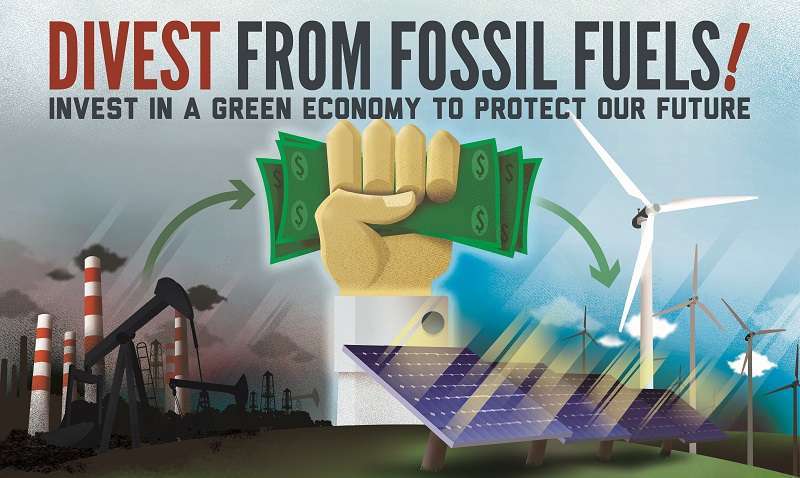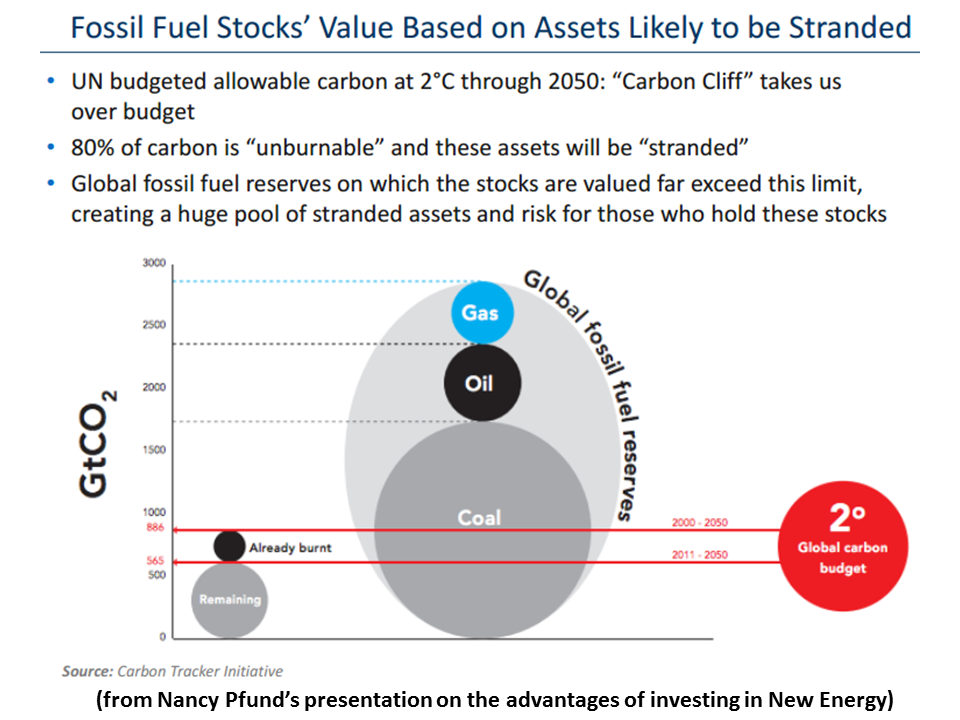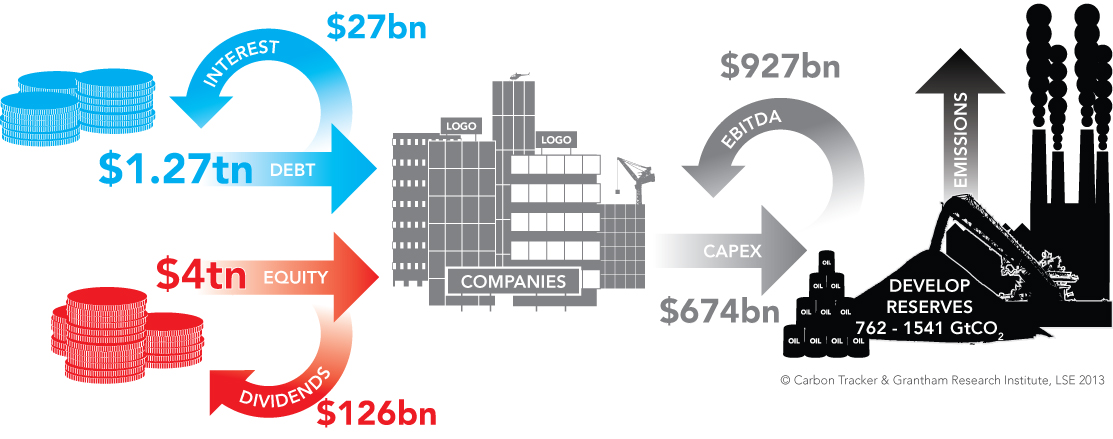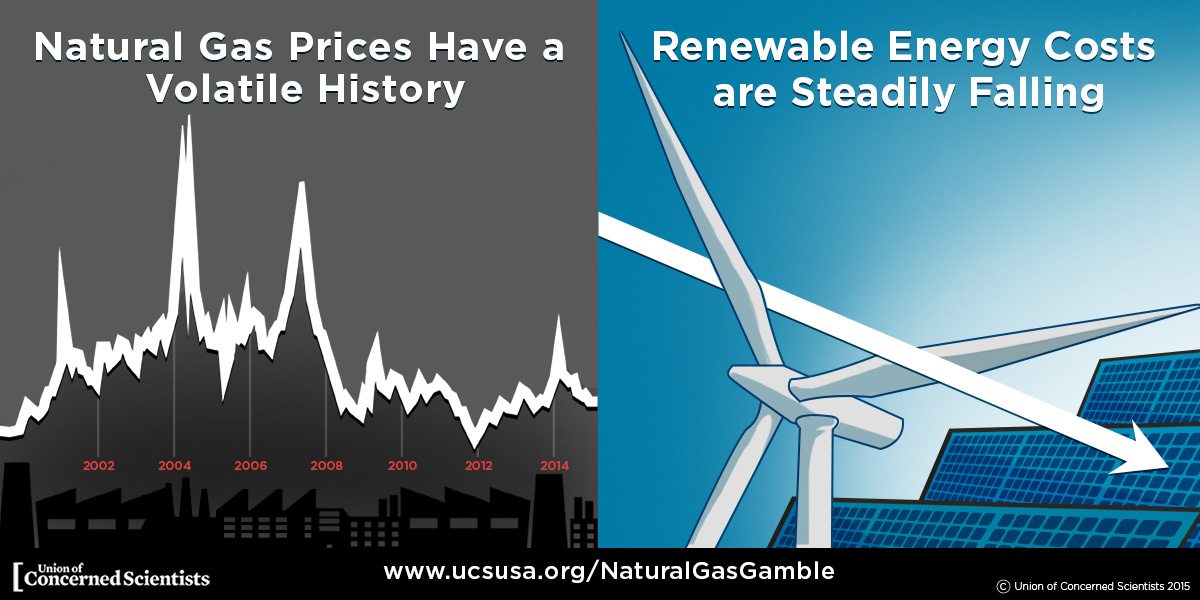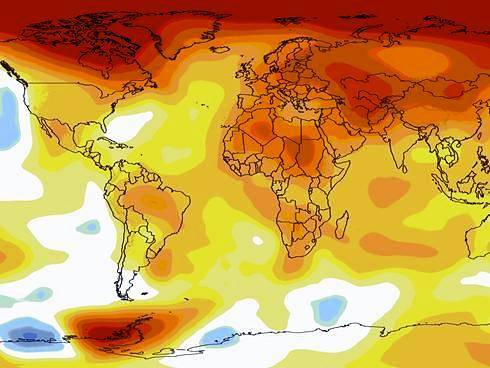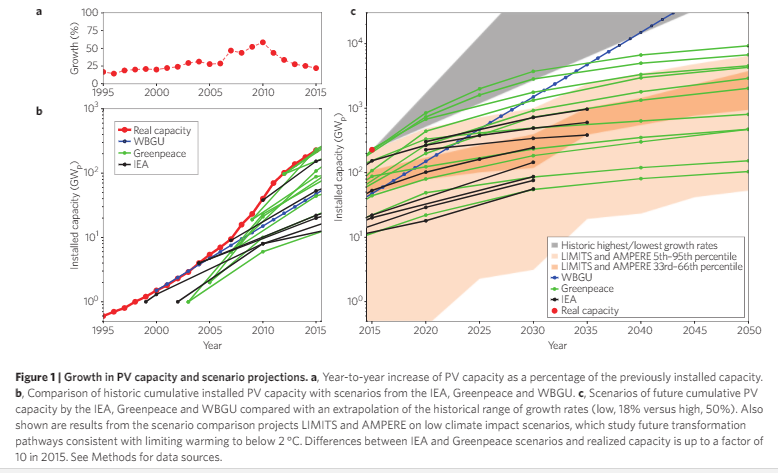Today’s climate scientist chatter on social media is dominated by the need to mass deploy wind and solar now and the likelihood that fusion won’t be ready for at least another decade even as it poses serious health risks. Meanwhile, one of the world’s top sea ice experts reports that global sea ice is hitting new lows.
All posts tagged Bill McKibben
Climate Scientist Chat — Fusion vs Clean Energy and Record Low Global Sea Ice
Posted by robertscribbler on February 1, 2023
https://robertscribbler.wordpress.com/2023/02/01/climate-scientist-chat-fusion-vs-clean-energy-and-record-low-global-sea-ice/
The Clean Energy Revolution is Here, But There Are No Silver Bullets
Breakthroughs in fusion, falling prices for clean energy, mass deployment of wind, solar, water, EVs, and a dire need for rapid climate action are all spurring a transition away from dirty fuels. But it needs to happen fast to save our coastlines and so many of the natural systems we all rely on.
Posted by robertscribbler on December 25, 2022
https://robertscribbler.wordpress.com/2022/12/25/the-clean-energy-revolution-is-here-but-there-are-no-silver-bullets/
Investors are Fleeing Fossil Fuels in Droves
When Bill McKibben and 350.org spear-headed a campaign to divest from fossil fuels and go 100 percent renewables as part of a multi-pronged strategy to confront ramping harms from global climate change in 2012, the big push-back was “divestment doesn’t work, it’s just feel-good, someone else will just buy the stocks when prices drop.”
The Green Mouse That Roared
As if where individuals, banks, investment firms and governments put their money doesn’t matter. As if monetary policy at all levels isn’t an enabler of energy and climate policy. As if the world were awash in an infinite flood of money. As if capital just magically grows on trees.
The detractors clearly didn’t get it. They’d already lost the argument. But the ultimate realization would take years to materialize.
The divestment movement wasn’t so much about the short-term, day to day, flux of money on the financial markets. It was instead aimed at triggering a long term mega-trend. The movement did this by shining a light on the intrinsic immorality of fossil fuel burning. By changing the terms of the environmental debate to include such objects as financial risk and stranded assets. By meeting investors on their own intellectual turf on a daily basis. And by revealing to them the very serious and real risk of loss they were exposed to by pumping money into an energy source that produces widespread, ramping and systemic harm.
A long game that is presently gaining some very significant traction. For it appears that Bill McKibben and the various proponents of the divestment movement have managed to outflank the fossil fuel industry on what was, hitherto, intellectual and financial ground under their unquestioned control. They became, all of us involved became, the green mouse that roared.
(The divestment movement helped to shine a light on the various glaring financial risks involved in continued fossil fuel burning. A primary issue being that due to damage caused by climate change, losses to the whole financial system would eventually greatly outweigh gains. At which point, sunk fossil fuel assets would become stranded due to investor flight. Image source: Carbon Tracker.)
From EcoWatch:
We used text analytics software to sift through 42,000 news articles about climate change between 2011 and 2015 and map the influence of the radical flank. In this analysis, we found that the divestment campaign expanded rapidly as a topic in worldwide media. In the process, it disrupted what had become a polarized debate and reframed the conflict by redrawing moral lines around acceptable behavior.
Our evidence suggests this shift enabled previously marginal policy ideas such as a carbon tax and carbon budget to gain greater traction in the debate. It also helped translate McKibben’s radical position into new issues like “stranded assets” and “unburnable carbon,” the idea that existing fossil fuel resources should remain in the ground.
Although these latter concepts are still radical in implication, they adopt the language of financial analysis and appeared in business journals like The Economist, Fortune and Bloomberg, which makes them more legitimate within business circles.
Thus, the battle cry of divestment became a call for prudent attention to financial risk. By being addressed in these financial publications, the carriers of the message shifted from grassroots activists to investors, insurance companies and even the Governor of the Bank of England.
Mass Divestment Underway as Climate Change Impacts Worsen
Today the world is starting to wake up, bleary eyed and hung over from tar sands smog, to the reality that climate change is poised to eat everyone’s lunch. The U.S. has been hammered by not one, not two, but three $100 billion dollar plus hurricanes. All of those storms were made worse by climate change and one — Harvey — was found to be three times more likely due to the heat trapping gasses fossil fuel based industry has collectively pumped into the world’s atmosphere. With the Thomas Fire threatening to burn down Santa Barbara in December, California is reeling from its worst fire season on record. And glaciers from Greenland to Antarctica are teetering at the brink — ready to inundate the world’s cities at rates far faster than previously expected with only just a bit more added fossil fuel trapped heat.
(How investments in fossil fuel based industry generate carbon emissions. Image source: Carbon Tracker.)
That’s with global temperatures at only 1.1 to 1.2 C above 1880s averages. Keep burning fossil fuels and we’ll hit 3 to 7 C or more by 2100. And folks already feeling the pain of lost financial stability, lost homes, or forced displacement are starting to cry uncle.
Some of the investors holding the fossil fuel industry’s purse strings appear to have had enough. AXA Equitable CEO Thomas Buberl this week stated: “A 4 C world is not insurable.” The major financial and insurance firm has pledged to invest 10.6 billion in environmentally friendly projects and to move 4 billion in funds out of fossil fuels by 2020.
But AXA isn’t the only one by far. Other banks, firms, and share holders are realizing in droves that investing in that 4 C world by throwing more money at fossil fuels isn’t worth a darn either. The World Bank just announced it will stop investing in upstream oil and gas projects by 2019. This after resisting appeals to divest for years. The 23 large regional investors of the International Development Finance Club, who hold 4 trillion in assets, have agreed to align their procurement with the goals of the Paris Climate Summit. Dutch ING bank has announced that it won’t fund any utility that relies on coal for more than 5 percent of its energy.
Meanwhile, an umbrella group managing 26.3 trillion dollars in assets is directly targeting the world’s top 100 carbon emitters. The group — called Climate Action 100 — comprises 225 pension funds and other investors. And it aims to get the world’s worst carbon emitters to curb their greenhouse gas pollution and to disclose their climate change related risks to share holders. Oil, gas, coal, cement, mining and major transportation players are all in Climate Action 100’s sights.
(Renewables possess superior economics in a number of key facets. 1. They have a positive learning curve — the more you build the less they cost. 2. They reduce healthcare costs to society and increase productivity. 3. They reduce ramping systemic harms from climate change by replacing fossil fuel burning. Image source: Union of Concerned Scientists.)
The shareholders from Climate Action 100 have effectively drawn a line in the sand. If these top emitters fail to act to reduce their carbon pollution, then the investors from the group will move their money elsewhere. Effectively, this action is directly from the divestment playbook. But it is now one that lives entirely in the realm of global finance. In other words, divestment is no longer just an environmentalist thing. Global finance, to a rising degree, is being infused with rational environmental thought to the point that it owns it.
Mindy Lubber, President and CEO of Ceres notes in an interview to Motherboard:
“These investors are the largest owners of companies and they see climate change as a serious threat to their investments and the global economy. They believe it is imperative these companies move away from high-carbon emitting activities. Such companies [top 100 emitters] are unlikely to have economic success [if they don’t adjust to the reality of climate change].
Strong Renewable Energy Economics Mean Investors are No Longer Captive to Dirty Energy
This push for divestment from fossil fuels and holding fossil fuel industry accountable by many of the world’s wealthiest banks and firms comes as renewable energy is making major gains. Solar and wind energy are now less expensive than coal or even gas in many markets. The price of electrical vehicles is falling even as these non-emitting forms of transportation are becoming more capable than traditional ICE vehicles. And the price of related battery storage is also plummeting. So it’s not as if there is no viable alternative to dirty and dangerous fossil fuels. In fact, the alternatives are much more attractive on their own merits. Investors have options at hand to confront climate change. So do the rest of us. And that whole divestment thing that was nonsensically poo-pooed by naysayers — it’s becoming as ubiquitous as oxygen.
CREDITS:
Hat tip to Bill McKibben
Hat tip to EcoWatch
Hat tip to Miles H
Posted by robertscribbler on December 15, 2017
https://robertscribbler.wordpress.com/2017/12/15/investors-are-fleeing-fossil-fuels-in-droves/
Major Environmental Groups Aim for 100 Percent Renewable Energy; Nature Study Shows Solar Alone is on Track Toward 50 Percent
Here we explore how models have consistently underestimated PV deployment and identify the reasons for underlying bias in models… We propose that with coordinated advances in multiple components of the energy system, PV could supply 30–50% of electricity in competitive markets. — Nature
It’s the call for the rapid conversion of energy systems around the country to 100% renewable power — a call for running the United States (and the world) on sun, wind and water. What Medicare for All is to the healthcare debate, or Fight for $15 is to the battle against inequality, 100% Renewable is to the struggle for the planet’s future. — Bill McKibben
*****
Let’s be very clear. The big first step in saving cities like Houston and regions like South Asia from this global warming nightmare we’re creating is to replace the chief cause of the problem with something else. And when the central driver of global warming is fossil fuel burning, then you can’t solve that problem by continuing to dig up fossil carbon and combust it. Full stop.
(The world is heating up, primarily due to fossil fuel burning. Rapidly replacing those fuels with renewables is crucial going forward. Image source: NASA.)
That’s why visionaries like Bill McKibben and agencies like 350.org and the Sierra Club are now engaged in a campaign to promote 100 percent renewable energy policies at every level of government. Under such policies, an increasing number of these governments and institutions commit to using only renewable energy. And they do so within a prescribed timeframe.
It’s a policy aimed at solving the climate crisis while saving the stakeholders themselves. At not continuing along a path toward worse disasters than Harvey and ultimately lethal climates like those of the Permian. At not putting stakeholder cities, states and industries at ever increasing risk. Ultimately, it’s aimed at combating the central cause of global warming — fossil fuels — by leveraging the superior economics of wind and solar to crowd them out. A goal that’s enabled by the fundamental economic superiority of renewables. And the timing couldn’t be better.
For renewable energy, in the form of wind and solar, is now less expensive in most applications than gas and coal. And the price is continuing to drop. This means that the economic argument for fossil fuels has fewer and fewer legs to stand on. Arguments attacking renewables increasingly rely on either baseless and false inflations of environmental damage, or on a downplaying of renewable energy’s economic strength and potential future capacity — attempting to divide and conquer environmentalists by creating inaccurate impressions or to tamp down enthusiasm among renewable energy supporters. Such anti-factual messaging, however, reveals the present economic, political and social vulnerabilities of fossil fuel interests as they are forced more and more to rely on outright deception.
Now, as with climate change, the fossil fuel special interests are facing off against a rising tide of scientific evidence. This time, the science isn’t just revealing the causes of environmental harm in the form of fossil fuel burning — it is showing why renewable energy’s growth rate will be faster and more transformative than expected.
(Environmental organizations like Greenpeace have provided the most optimistic and accurate assessments of solar growth rates — flummoxing most energy industry experts. Image source: Nature.)
A new study in Nature this week found that solar energy alone would represent up to 50 percent of global electricity generation capacity by 2050 on the basis of its economic strength alone. Solar benefits from a simplicity of design, use of common materials, easy scalability, a proven track record of increasing efficiency over time, and the ability to easily loop in technological design breakthroughs. These advantages have allowed solar to reduce its price by 22 percent for each doubling of installed capacity.
Wind benefits from similar economies of scale. And a new study out from the National Renewable Energy Lab found that the price of wind would fall by another 50 percent through 2030. Estimates that are up from 30 percent even earlier this year. A pretty amazing ability considering the fact that wind is already the lowest cost energy source in many applications.
This economic strength really gives environmental advocacy groups an effective tool for achieving goals going forward. Now, a zero emitting technology that produces orders of magnitude less harm than present energy systems is within reach. Now cities, states and nations can change the world for the better. And now they can do it on the cheap. But not only does this thrust jibe with traditional environmental goals — it appeals to the 72 percent of republicans who support renewable energy, regardless of their views on climate change. In this way, the 100 percent renewable campaign is one that appeals to all Americans and can therefore gain ground in pretty much every state and region.
RELATED STATEMENTS AND INFORMATION:
Links:
The Underestimated Potential of Solar Energy to Mitigate Climate Change
Wind Power Costs Could Drop 50 Percent. Solar PV Could Provide up to 50 Percent Global Power. Damn.
Innovation Can Reduce Wind Energy Costs by Another 50 Percent Through 2030
Bill McKibben Kicks Off Keep it 100 Campaign
Posted by robertscribbler on September 1, 2017
https://robertscribbler.wordpress.com/2017/09/01/major-environmental-groups-aim-for-100-percent-renewable-energy-nature-study-shows-solar-alone-is-on-track-toward-50-percent/
350.org Leads Wave of Fossil Fuel Divestment
In a Rolling Stone interview this past summer, Bill McKibben, head of 350.org and related tar sands protests, called for investors to dump holdings in oil, gas, and coal companies as a means to fight climate change. McKibben’s call for this divestment mirrors similar action during the latter 20th century against South Africa’s Apartheid government via its state issued bonds and corporate backers.
Now, divestment of fossil fuel company stocks is again being spear-headed by major universities, cities, religious groups, and individuals. In total, over 210 university campuses now host divestment groups — and the number continues to grow. Even major cities have pitched in with the mayor of Seattle ordering the city trust to dump fossil fuel company holdings.
Spurring this large and growing divestment movement are two numbers: 565 gigatons and 2,795 gigatons. 565 gigatons represents the amount of carbon we can dump into our atmosphere without pushing human caused global warming above the catastrophic level of 2 degrees Celsius. 2,795 gigatons is the total amount of carbon that would end up in the atmosphere if fossil fuel companies managed to sell all the oil, coal, and natural gas on their books. Carbon pollution they are doing their best to foist upon a world increasingly damaged by an angry climate.
Making matters worse is the fact that fossil fuel companies are increasing the amount of carbon we pump into the atmosphere at a break-neck rate. Last year alone, 34 gigatons were dumped into Earth’s already riled climate. At the current rate of emission, enough carbon will be emitted to pre-set a 2 degree increase by 2029. But since emission rates continue to increase, that date will likely be closer to 2025. And since the world’s policy-makers are failing to act, divestment activists are attempting to pull the rug out from under fossil fuel industries by denying them public funds via the world’s investment markets.
Now anyone — an individual, an investment firm, any institution or municipality with a trust or an endowment — can take part in the campaign to reclaim a healthy climate by pulling investment funds out of fossil fuel industries. And, so far, the response has been massive — far more rapid than the response to Apartheid. Let’s hope that these direct actions on the part of responsible individuals begins to roll back the tide of increasing fossil fuel exploitation and carbon emission. For my part, I hope you express your right to divest as well.
Links:
http://www.thenation.com/blog/172411/why-divestment-changing-climate-movement#
Posted by robertscribbler on January 25, 2013
https://robertscribbler.wordpress.com/2013/01/25/350-org-leads-wave-of-fossil-fuel-divestment/


